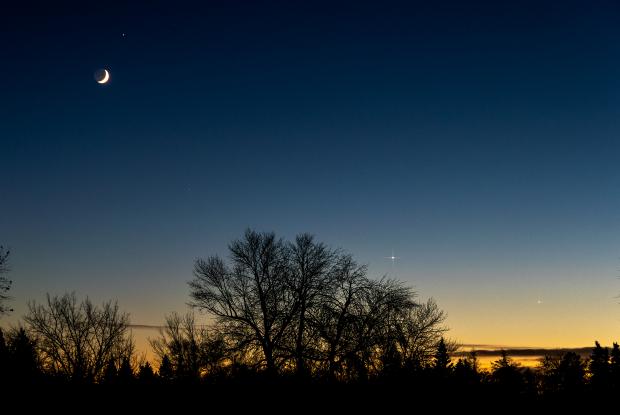Year
Type of garden
Biodiversity Garden
Monarch Oasis
Edible garden
Testimonial
Deux ans après l’arrivée de la première ruche sur le campus du Collège André-Grasset, un projet éducatif mis en place avec la collaboration de la coopérative de solidarité Miel Montréal, le Comité d’action et de concertation en environnement (CACE) du Collège souhaitait faire un pas de plus afin de bonifier l’offre en pollen et nectar pour les abeilles de la ruche ainsi que pour les autres insectes pollinisateurs du secteur. Des exemples positifs près de nous, notamment chez nos voisins de la TOHU, ont démontré les bienfaits de réaliser des aménagements fleuris riches en pollen et en nectar à proximité de la ruche.
Au printemps 2017, une quinzaine de variétés de plantes indigènes et mellifères ont dont été soigneusement sélectionnées en fonction de leur période de floraison, de façon à assurer une floraison en continu d’avril à novembre chaque année. Un approvisionnement en semences locales et écologiques a été privilégié. C'est dans la serre de l'école que les étudiants du comité Envert, aidés par la conseillère en environnement du Collège, ont lancé dès le mois de mars les semis de ces différentes variétés.
Une grande corvée de jardinage a été tenue à la mi-mai, au cours de laquelle les étudiant(e)s ont découvert une technique d’aménagement inspirée de la permaculture et connue sous le nom de « jardinage en lasagnes ». Afin d’étouffer l’herbe et reconstruire un nouveau sol en mesure d’accueillir des plantes, des couches de carton récupéré, de paille, de compost et de terre à jardin ont été superposées.
Les impacts sur la communauté de cette première phase ont été immédiats. Des membres du personnel ont vite pris l'habitude d'aller flâner près du jardin pendant leurs pauses, suivis des étudiants, dont l'intérêt pour les ruches et les fleurs a bondi, et des résidents du quartier, qui venaient volontiers poser des questions pendant les corvées de plantation. Des dizaines d'espèces d'insectes pollinisateurs (indigènes et domestiques) ont investi les lieux dès les premières floraisons, et coïncidence ou non, le comité apiculture a connu une récolte record de miel (50 litres) sur le campus à l'automne. C'est évidemment sans compter les innombrables connaissances acquises par les étudiants impliqués bénévolement dans le projet.
Devant un tel succès, la direction du Collège a donné son feu vert afin que le comité Envert puisse lancer une deuxième phase. Ainsi, au printemps dernier, un deuxième aménagement encore plus grand a été réalisé juste à côté. Celui-ci est venu doubler le nombre d'espèces florales du jardin. Un parcours découverte au sein de l'aménagement a aussi été créé grâce à des écriteaux en bois gravés identifiant chaque espèce végétale et ses propriétés bénéfiques. Nous avons également fait l'acquisition de nichoirs pour abeilles solitaire afin d'attirer et de faciliter la reproduction des pollinisateurs indigènes.
Le jardin compte aujourd'hui près de 70 espèces florales différentes. Une activité de récolte de semences a été tenue cet automne en présence de la coordonnatrice du programme Save the bees de la fondation Sierra Club Canada. Les semences récoltées seront en partie distribuées à la collectivité et nous permettront de lancer de nouveaux semis au printemps prochain.
Nos plantes:
Phase I : achillée millefeuille, agastache fenouil, agripaume, asclépiade incarnate, aster de Nouvelle-Angleterre, bourrache officinale, centaurée à grosses têtes, desmodie du Canada, épilobe à feuilles étroites, échinacée, fraisiers des champs, framboisiers, groseiller, hélianthe scrofuleux, héliopsis faux-hélianthe, julienne des dames, lavande, lobélie du cardinal, mauve, menthe, millepertuis pyramidal, monarde fistuleuse, oeillets d'inde, onagre bisannuelle, origan grec, pastel des teinturiers, rudbeckie hérissée, tournesol, thym citron, thym d'hiver, verge d'or rugueuse, verveine hastée, zinnia.
Phase II : scrofulaire noueuse, amaranthe, calendule, asclépiade tubéreuse, coréopsis lancéolé, digitale à grandes feuilles, camomille des teinturiers, molène, onagre, millepertuis, centaurée bleue, verge d'or zigzagante, rudbeckie laciniée, capucine, phacélie, thym serpolet, aster ponceau, brunelle commune, cataire citron, agastache fenouil, lierre terrestre, adénophore à feuille de lis, myosotis des bois, bourrache, marjolaine des jardins, sauge sclarée, trèfle pied-de-lièvre, valériane officinale, sarriette d'été, camomille allemande, marguerite commune , cerfeuil, angélique, guimauve officinale, mélilot blanc, lupins, ciboulette, ancolie, digitale pourpre, agripaume cardiaque, échinacée, eupatoire maculée, chardon marie, cardère, julienne des dames.









































